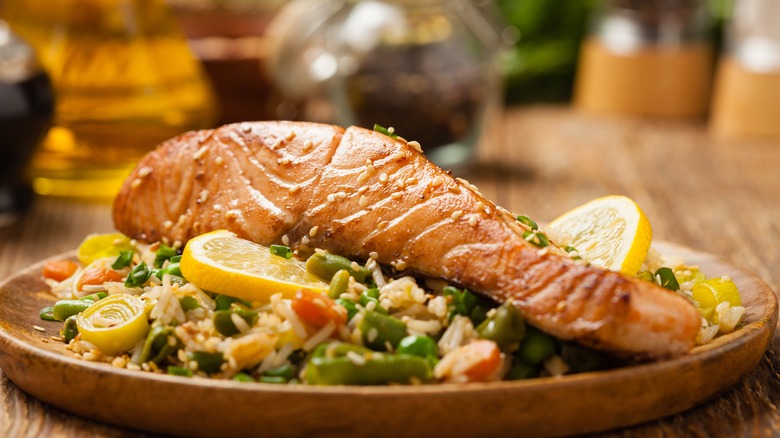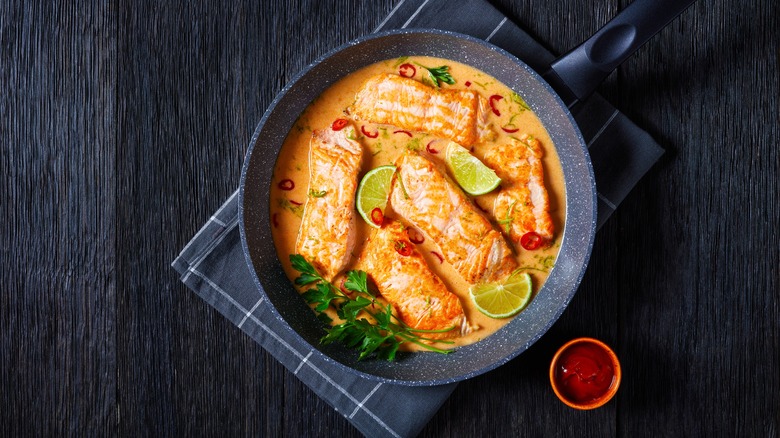The Temperature Mistake That Causes A Salmon's White Ooze
Anyone seeking to add more flavor or nutrition to their diet could certainly do worse than turn to salmon. This fatty fish is a delicious way to add more sustenance to your daily diet without sacrificing flavor.
A simple roasted salmon is always delicious, but it's also a versatile ingredient that can be used in various spectacular dishes. In addition to tasting great, Healthline claims that salmon is an exceptionally nutritious food, making it an ideal choice for dinner.
BBC Good Food says that salmon is excellent for a healthy heart because of its abundance of omega-3 fatty acids. Healthline adds that these healthy fats have been credited with fighting inflammation, reducing blood pressure, and lowering the risk of cancer. Eating salmon skin can also add a boost of these healthy fats, as well as a good dose of collagen. Its high protein content also helps improve bone health and builds muscle.
Some people might question whether they're getting these same benefits, though, as white ooze pours out of their salmon. It's important to know when your salmon has gone bad, but any white liquids on the fish's surface aren't usually a sign of spoilage. Instead, they're just a simple side effect of cooking the fish incorrectly.
High temperatures cause white ooze
If you've ever cooked salmon without properly researching beforehand, you've likely seen the thick white ooze that seems to leak out of the flesh. That's nothing to worry about regarding your salmon's quality, but it might mean you're cooking it incorrectly.
Food & Wine reports that this white ooze is typically released when your fish is being cooked at too high a temperature. Food Network adds that this material is a protein called albumin, which starts to ooze out of the flesh if it's overcooked or cooked too quickly.
Food Network adds that while this ooze might be a little unsavory, it is completely safe to eat. An easy way to avoid this is to cook your salmon skin-side down. This should minimize the amount of albumin that then appears during cooking. There's also another great way to remove this unsightly liquid that might even improve the quality of your salmon.
Salmon should be cooked at lower temperatures
According to Food & Wine, if you hope to have a nice crispy skin on your salmon, you'll have to cook it over fairly high heat. Reducing the cooking heat, though, will keep the albumin from forming on the surface of the salmon, and it might also preserve the fish's overall texture.
Food Network points out that one of the easiest ways to ruin a delicious salmon is by overcooking. If you're unfamiliar with testing whether or not a fish is done, it can be easy to cook the meat too quickly at too high a temperature. Instead of being flaky and stiff, it should have a gentle, melt-in-your-mouth texture when cooked properly. While throwing your filet into a sizzling hot pan might be exciting, it will also cook the fish way too fast and cause it to dry out.
This gentler cooking approach will also take care of any white ooze appearing on the fish's surface. Cook's Illustrated claims that salmon should be brought to about 125 degrees Fahrenheit for the best results. That means that it should stay well below the temperature will cause the albumin to liquefy and move to the surface.


